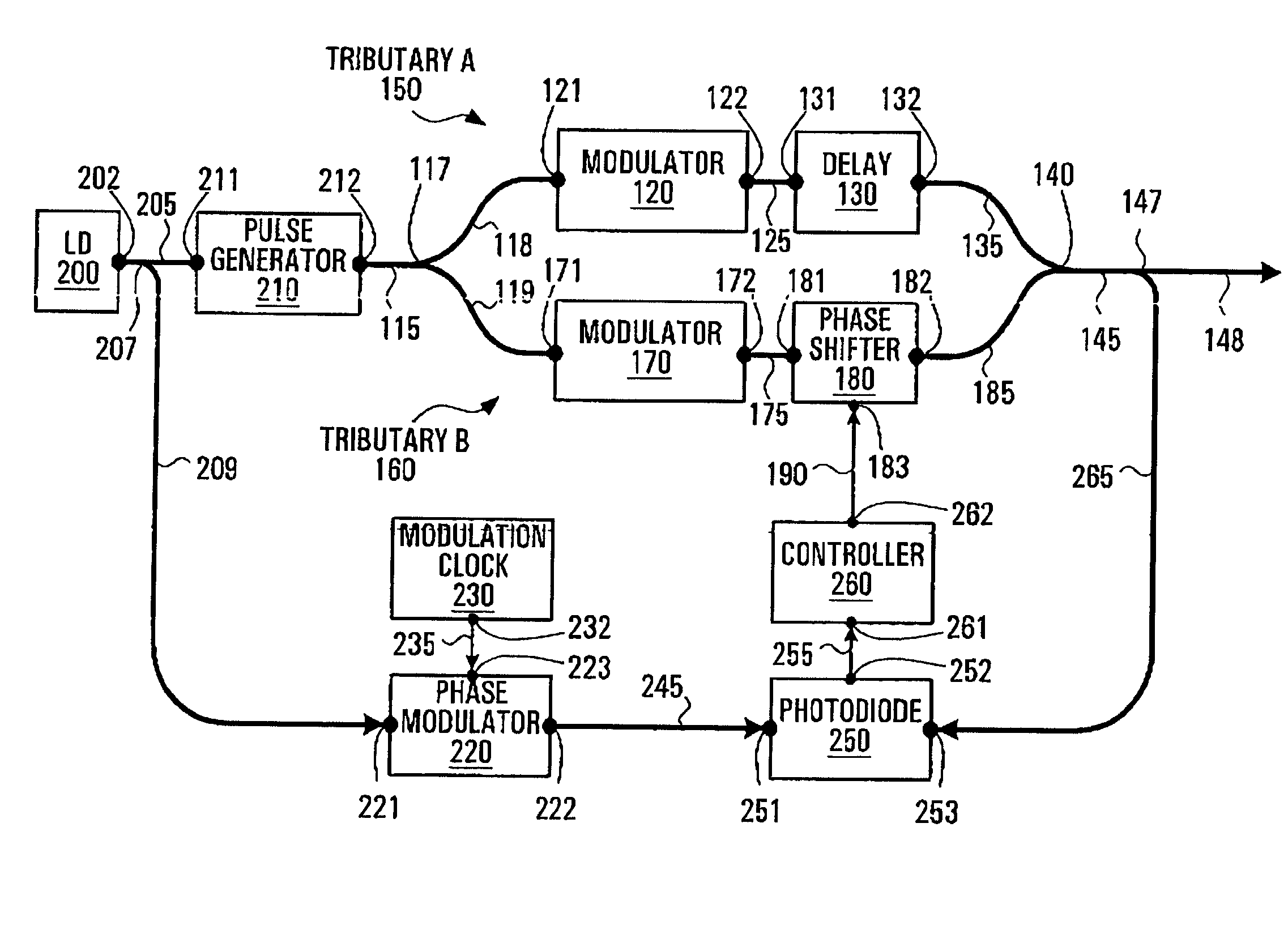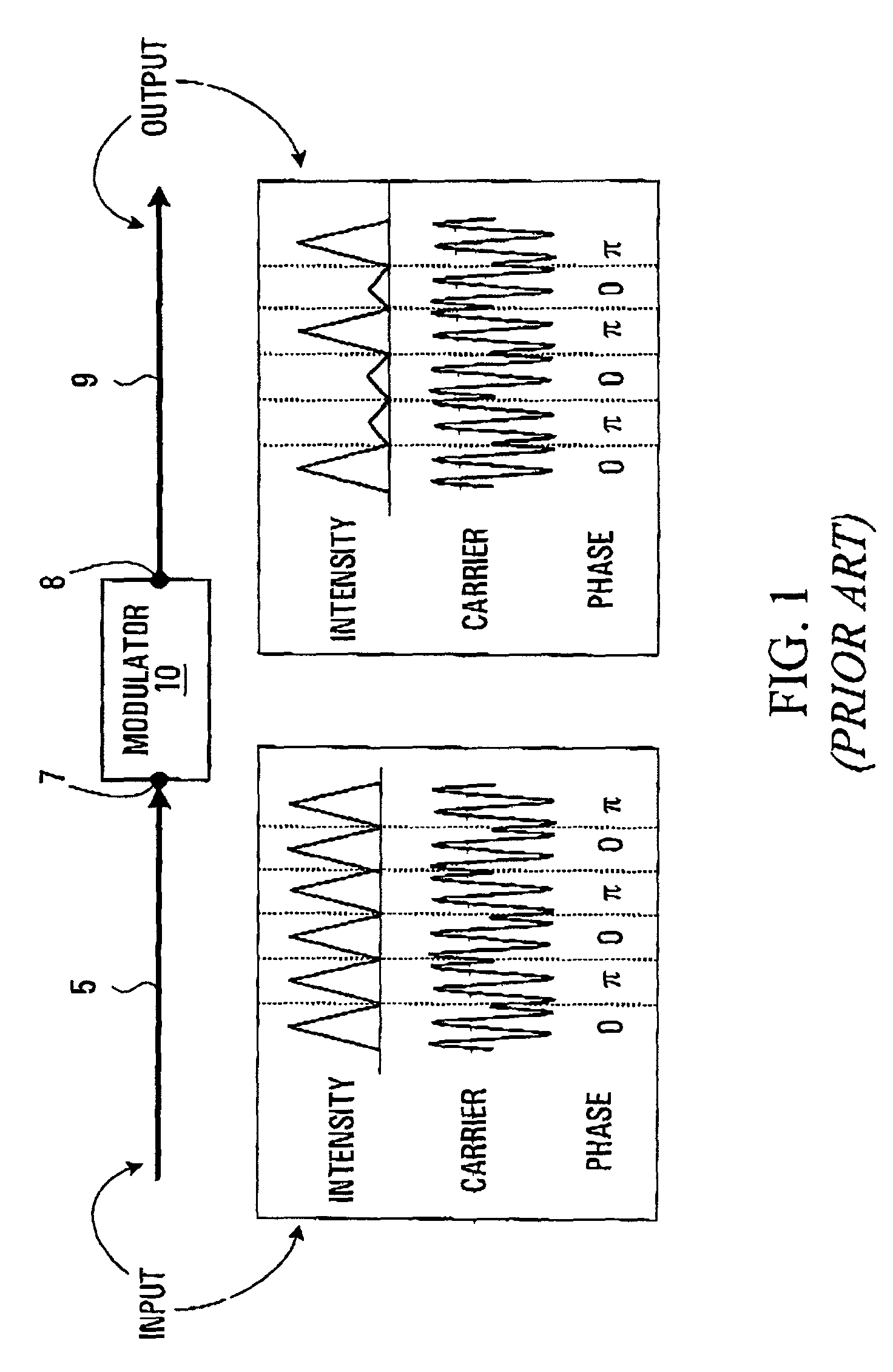Carrier-suppressed optical time domain multiplexing
a carrier-suppressed, optical time domain technology, applied in multiplex communication, time-division optical multiplex system, line-transmission details, etc., can solve the problem of difficult to produce optical path difference between two tributaries, the phase relationship between successive pulses is unknown and constantly changing, and the non-carrier-suppressed optical signals do not compensate for neighboring pulse interaction
- Summary
- Abstract
- Description
- Claims
- Application Information
AI Technical Summary
Benefits of technology
Problems solved by technology
Method used
Image
Examples
Embodiment Construction
[0043]Referring to FIG. 3, an OTDM module for producing CS-RZ optical format signals constructed according the invention is described. The general method of carrier suppressed modulation is implemented on an OTDM module by locking the phase difference of pulses from the two tributaries to π, by way of adaptive phase shifting.
[0044]A preferred embodiment of an apparatus constructed according to the invention is now described in terms of its structure. An input optical signal which is made up of a pulse array propagates along an input waveguide portion 115. The input waveguide portion 115 is coupled to an optical splitter 117 which is set to split optical signals passing therethrough along two outputs in a preferably 50%-50% power ratio. A first output of the optical splitter 117 is coupled to a first upper waveguide portion 118. The first upper waveguide portion 118 is coupled to an input 121 of an upper optical attenuator or upper optical modulator 120. The upper optical attenuator ...
PUM
 Login to View More
Login to View More Abstract
Description
Claims
Application Information
 Login to View More
Login to View More - R&D
- Intellectual Property
- Life Sciences
- Materials
- Tech Scout
- Unparalleled Data Quality
- Higher Quality Content
- 60% Fewer Hallucinations
Browse by: Latest US Patents, China's latest patents, Technical Efficacy Thesaurus, Application Domain, Technology Topic, Popular Technical Reports.
© 2025 PatSnap. All rights reserved.Legal|Privacy policy|Modern Slavery Act Transparency Statement|Sitemap|About US| Contact US: help@patsnap.com



